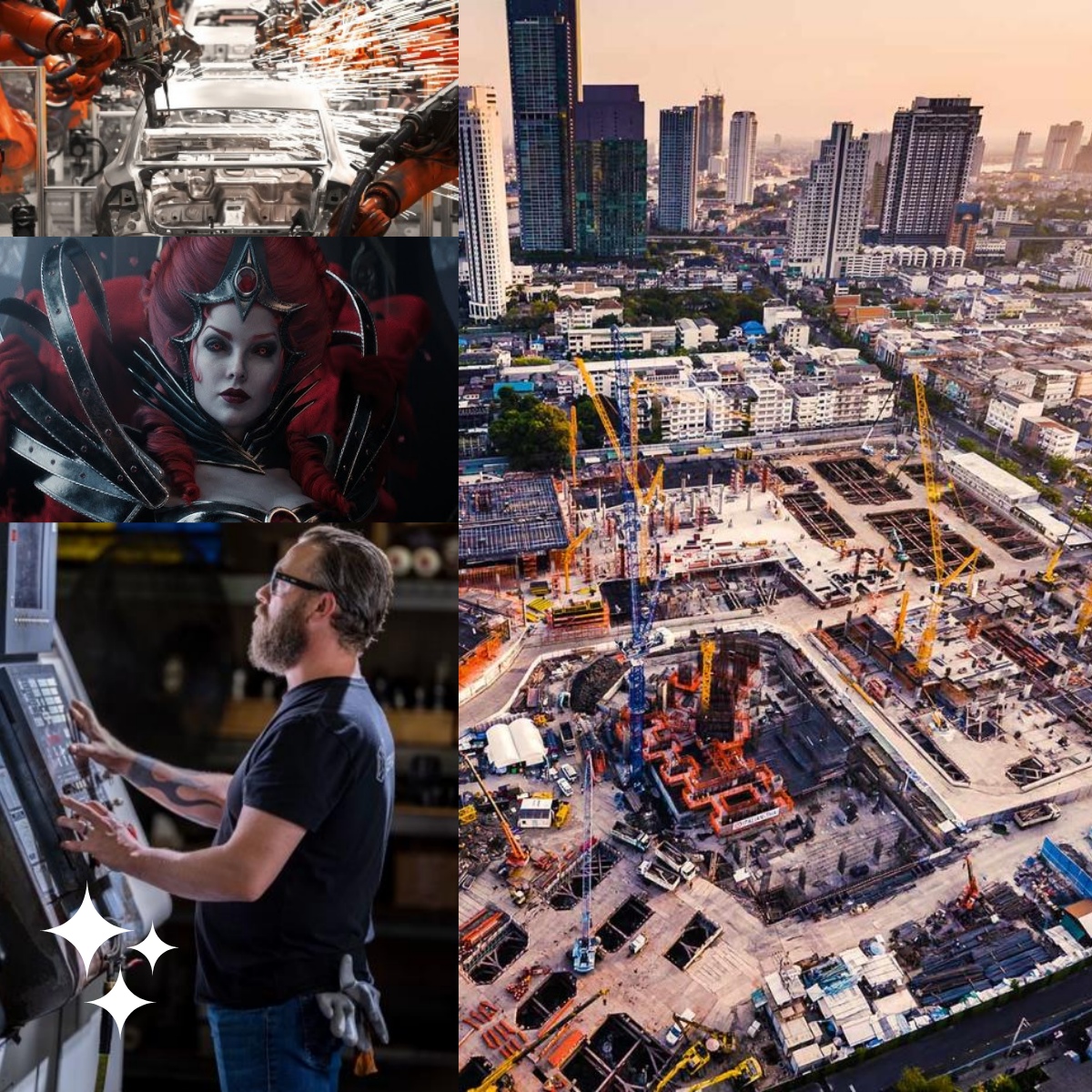An in-depth conversation between AI pioneer Yoav Shoham and Autodesk Research Scientist John Locke, exploring how artificial intelligence is transforming architectural practice, education, and the built environment.
Introduction:
ArkDesign.AI and The Society of American Registered Architects (SARA) recently hosted a groundbreaking symposium examining the intersection of artificial intelligence and architecture. The opening session featured a compelling fireside chat between two thought leaders bridging the gap between cutting-edge technology and architectural practice.

John H. Locke, a Senior Research Scientist at Autodesk Research and accomplished architect, offered unique insights from his dual perspective spanning traditional architectural practice and advanced computational design research. Their conversation, moderated by architect Michael Loussinian, provided a comprehensive overview of AI’s current applications in architecture and its potential future impact on the profession.

Prof. Yoav Shoham, a pioneer in artificial intelligence from Stanford University and AI21 Labs, brought decades of experience in AI development and deployment across multiple industries.
Understanding the AI Landscape
Demystifying AI Terminology
Shoham opened the discussion by addressing the confusion surrounding AI terminology that pervades current industry discourse. “Today, while AI is on everybody’s lips, not everybody has a good grasp of what AI is,” he explained, presenting a framework to understand the relationship between various AI concepts.
He clarified that the current focus on generative AI and large language models (LLMs) represents just the innermost circle of a much broader AI landscape. Deep learning and neural networks form the core of today’s AI revolution, but they exist within the larger field of machine learning, which itself is part of the comprehensive domain of artificial intelligence.
“These neural networks going back to the forties have been transformed by two key factors,” Shoham noted. “First, we have data and compute power so vast that we couldn’t imagine we’d have it. Second, the neural networks of today are multi-layered—which is why it’s called deep learning—unlike the shallow, two-layer networks of the past.”
The Transformer Revolution
The conversation highlighted the 2017 Transformer paper from Google as a pivotal moment. This introduced the attention mechanism that enabled modern language applications and eventually expanded beyond text to images, video, and other modalities—hence the term “foundation models.”
Shoham emphasized that despite the focus on generative capabilities, “the same technology is used to analyze content just as much as to generate it. The term ‘generative AI’ is very much a misnomer, but it’s stuck.”
AI Applications in Architecture
Beyond the Hype: Real-World Implementation
Locke provided crucial perspective on the practical reality of AI implementation in architectural practice. “I think we’re living in a world right now where AI is being defined by ChatGPT,” he observed. “It’s given us this vision of a one-click solution where you throw a sentence into the cloud and magically create a building design.”
However, the reality is far more nuanced and empowering for architects willing to understand the underlying technologies. Locke’s work at Autodesk Research demonstrates a spectrum of computational approaches, from deterministic generative design to AI-powered creative assistance.
The Generative Design Foundation
Locke illustrated this spectrum through several real-world projects:
Airbus Partnership: Working with the aerospace company, Autodesk used generative design to optimize aircraft components. The project focused on creating the lightest and strongest possible partition, exploring thousands of design options to find optimal solutions along the Pareto front of weight and strength performance. Factor OS Housing Development: A more complex project involving a 300-unit housing development in Oakland, incorporating qualitative goals like habitability and livability alongside quantitative metrics like cost and embodied carbon. “Here we’re creating thousands of unique designs with machine-readable metrics,” Locke explained, “but it’s not really AI because you’re explicitly letting the algorithm know what you want to create.”
Factor OS Housing Development: A more complex project involving a 300-unit housing development in Oakland, incorporating qualitative goals like habitability and livability alongside quantitative metrics like cost and embodied carbon. “Here we’re creating thousands of unique designs with machine-readable metrics,” Locke explained, “but it’s not really AI because you’re explicitly letting the algorithm know what you want to create.”
Transitioning to True AI Applications
The evolution toward genuine AI applications came through projects that moved beyond deterministic outcomes to embrace unexpected solutions. Locke described developing tools that use natural language input for interactive design generation, allowing users to request “a site with many housing units” and receive contextually appropriate design options.
This approach represents a fundamental shift from traditional generative design, which requires significant technical expertise to set up, to AI-powered tools that can “enhance your own creativity and leapfrog over those initial technical hurdles.”
Data Challenges and Knowledge Graphs
The Foundation of Reliable AI
A critical discussion emerged around the challenge of data quality and reliability in AI applications for architecture. Locke addressed this through his work on material knowledge graphs—a sophisticated approach to organizing and accessing building material information.
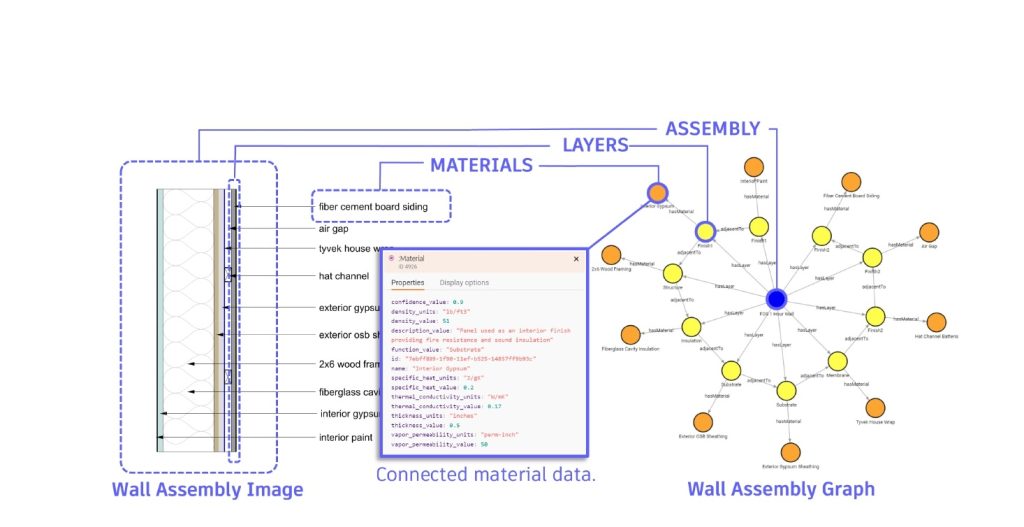
“AI models right now are lacking in sufficient context,” Locke explained. “Much of the challenge for applying language models to specific tasks lies in providing sufficient and accurate context.”
The solution involves aggregating data from multiple sources—building products, assembly drawings, and live design data—into a semantic framework that enables AI systems to understand relationships and make informed recommendations.
Vector Databases and Semantic Search
The technical implementation uses vector databases like Weaviate, which enable searching based on meaning rather than exact keywords. “What that means is, if you were searching for window assemblies, you wouldn’t need to use the exact same keyword,” Locke illustrated. “You could search for related meanings like lintels, glass, mullions, sills, but also performance aspects like visibility, daylight, or occupant well-being.”
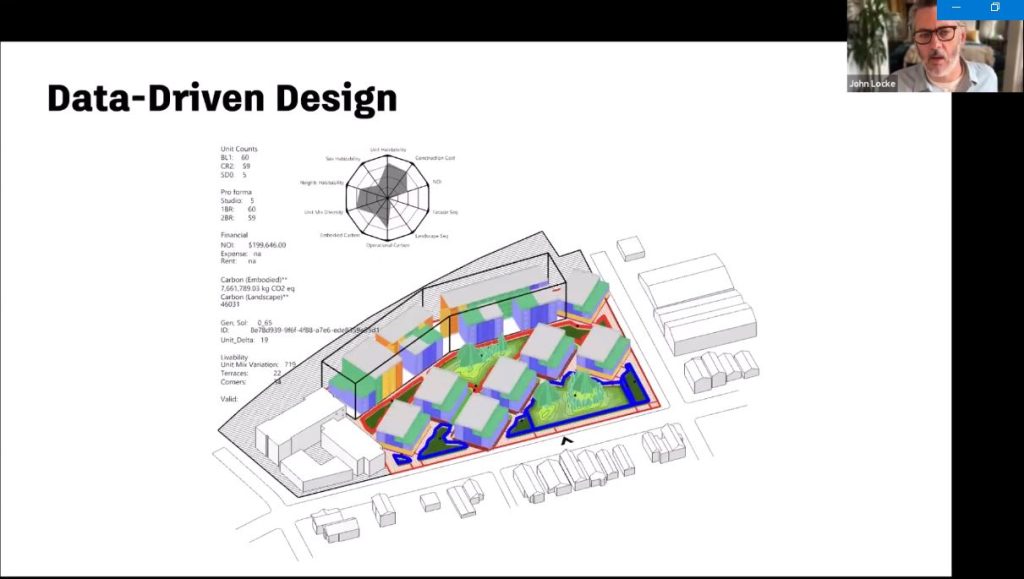
This approach enables AI systems to suggest material assemblies by understanding both the technical requirements and performance characteristics, linking large datasets in ways that support informed decision-making.
Professional Implementation and Trust
The Deployment Challenge
Shoham highlighted a critical gap between AI experimentation and professional deployment. “What you see in the enterprise is that while there’s a lot of interest, there’s a big drop-off from prototypes and experiments to deployment. One study shows that only 6% of projects get deployed.”
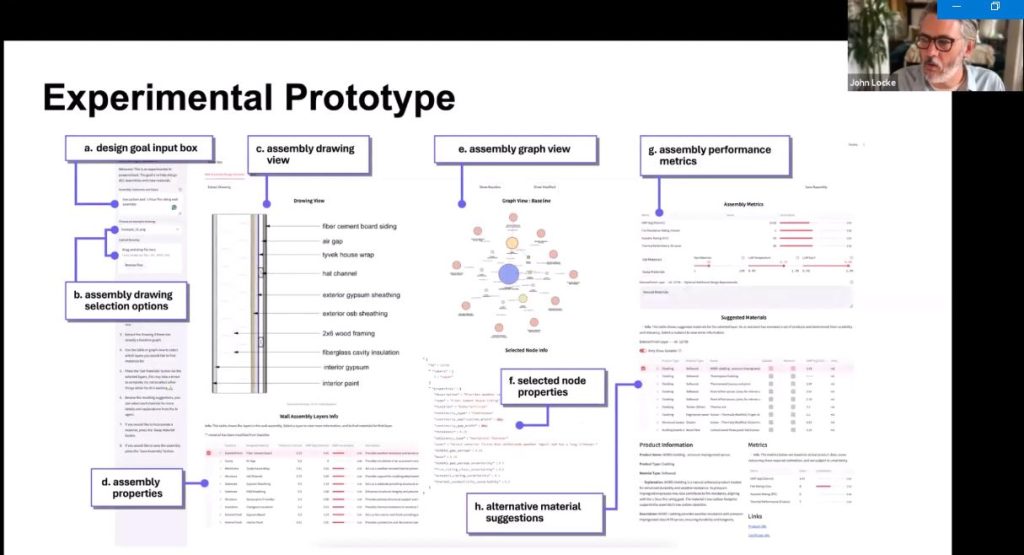
The primary barrier is reliability and predictability. “If you’re brilliant 95% of the time but not only wrong, but total garbage 5% of the time, you can’t work with that,” Shoham emphasized. “You can’t deliver a project to your customer with a 5% probability of total garbage.”
Building Professional AI Systems
The solution involves moving beyond simple LLM applications to comprehensive AI systems. “I’ve not seen a single case where a customer took an LLM, sent some prompt, and delivered the answer,” Shoham noted. “You need to wrap around it a whole bunch of stuff.”
This “orchestration” approach requires careful attention to:
- Data provenance and accuracy
- Cost control in deployment
- Transparent decision-making processes
- Integration with existing professional workflows
Locke reinforced this perspective: “Nobody wants to drive over a bridge that’s been structurally designed by a hallucinating AI. It’s about collaboration, trust, and transparency. It won’t work if it’s a black box and you don’t know where results came from.”
The Future of Architectural Practice
Augmentation vs. Replacement
The conversation directly addressed the persistent question: “Is AI going to replace the architect?”
Shoham drew parallels to the evolution of writing tools: “We used to have copy editors. Word processors now do the copy editing for us—spell checking, grammar checking. But we still need editors to provide high-level advice. Aspects of the profession are automated, not all of them.”
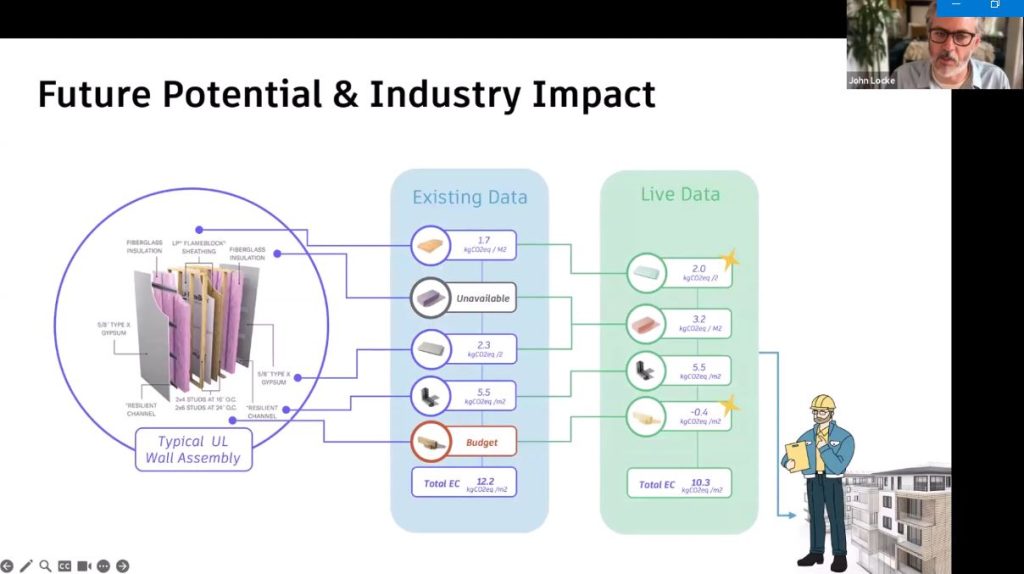
The tools present opportunities rather than threats, serving as “amazing companions and research assistants” that can surface many more possibilities than architects would discover unaided. “But at the end of the day, the final product you want is so nuanced in its requirements that you need the insights of a talented architect—now aided by this new AI assistant.”
Professional Liability and Responsibility
The discussion touched on emerging questions about professional responsibility when AI tools are involved in design decisions. Current practice maintains clear lines of accountability—structural engineers still sign off on AI-assisted calculations, and architects remain responsible for design decisions made with AI support.
However, the profession faces evolving questions about how AI tools might democratize certain aspects of architectural work while maintaining professional standards and liability frameworks.
Sustainability and Carbon Impact
AI for Environmental Performance
Locke’s research focuses significantly on using AI to improve building sustainability, particularly regarding embodied carbon in materials. His work demonstrates how AI can help architects make better material decisions early in the design process, when changes have the greatest impact.
The material knowledge graph approach enables designers to query for “low carbon, one-hour fire-rated wall assemblies” and receive contextually appropriate suggestions with performance data and alternatives—streamlining what would otherwise be time-consuming research into sustainable material options.
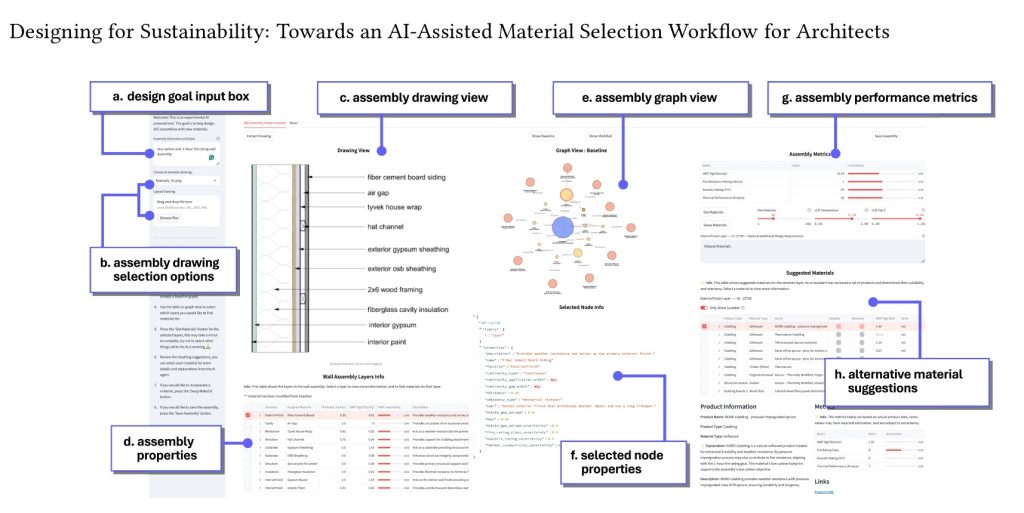
The Carbon Cost of AI
The conversation acknowledged the environmental impact of AI itself. “If I’m saying we’re going to make better sustainable choices by using AI, and every time you hit enter you’re burning off a square kilometer of Arctic ice, that’s probably not a good strategy,” Locke observed.
The approach requires demonstrating that the value proposition of AI-assisted design outweighs the computational costs, while simultaneously working to power AI systems with renewable energy sources.
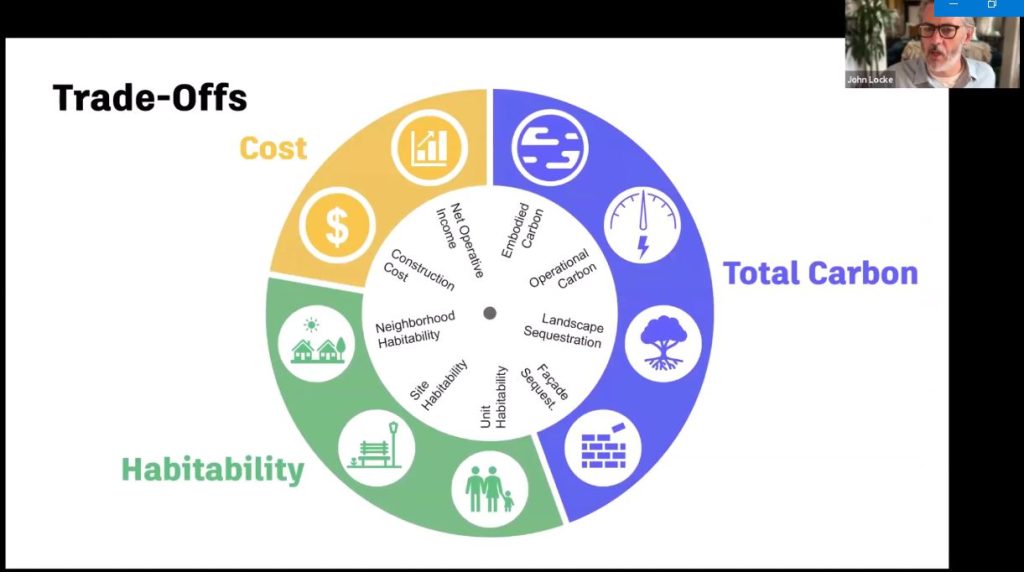
Collaborative Implementation
Learning from Scientific Research
Locke emphasized the value of staying connected to scientific research, citing how his team adapted techniques from papers like “Mario GPT” to architectural applications. “Tile-based design is applicable whether you’re making video game levels or building units,” he explained, demonstrating how cross-disciplinary research can unlock new capabilities for designers.
Industry-Academic Partnerships
Both speakers highlighted the importance of collaboration between industry, academia, and research institutions. Autodesk Research’s applied research model works directly within design projects to understand real-world constraints and opportunities.
“Those frictions about going from prototype to deployment are actually very meaningful for us,” Locke noted. “We want to know what are the challenges, because that makes our prototypes richer and more meaningful.”
Practical Applications and Current Uses
Immediate Implementation Opportunities
The discussion identified several areas where AI is already providing value in architectural practice:
Administrative Tasks: Email summarization, proposal writing, and research assistance represent low-risk, high-value applications that require minimal investment while providing immediate productivity benefits.
Code and Regulation Analysis: AI excels at parsing building codes, zoning ordinances, and regulatory text—areas where comprehensive analysis is critical but time-intensive.
Material Research: AI-powered tools can rapidly analyze material options, performance characteristics, and sustainable alternatives, supporting better decision-making without requiring deep technical expertise.
Platform-Based Solutions
Looking forward, Locke suggested that software development is moving toward platform-based approaches with modular AI capabilities. “You might think of software as a platform with different modular capabilities that could latch on to that platform so it could be bespoke to your specific problems.”
This approach would enable specialized AI tools for different building typologies—healthcare facilities might incorporate crowd simulation and wayfinding analysis, while residential projects might focus on modular unit arrangement and sustainability optimization.
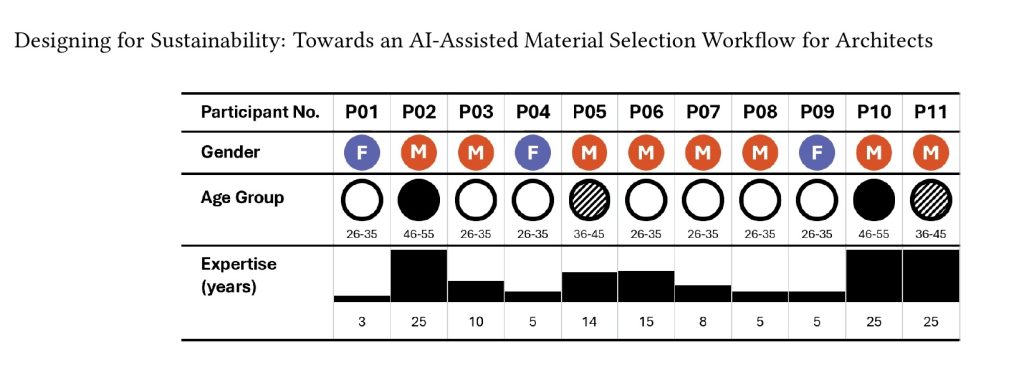
Professional Development and Learning
Staying Current with Rapid Change
The speakers acknowledged the challenge of keeping pace with rapidly evolving AI capabilities. Shoham noted that in professional settings, “things are going so incredibly fast that our work and ideas actually outpace legal ramifications.”
For practicing architects, the key is identifying specific problems where AI tools can provide value rather than adopting a “every problem is an AI problem” mindset. “What would you need? What would you want to do? Is AI a factor in that? It might be, it might not,” Locke suggested.
Building Technical Understanding
While architects don’t need to become AI experts, understanding the fundamentals enables better tool selection and more effective implementation. The conversation emphasized the importance of moving beyond simple prototyping with consumer AI tools to understanding how professional AI systems work.
Conclusion
The fireside chat revealed AI’s potential to transform architectural practice not through replacement of human creativity and judgment, but through augmentation of human capabilities. The most promising applications focus on automating routine tasks, enhancing research and analysis capabilities, and providing new tools for exploring design possibilities.
Success requires moving beyond the hype of consumer AI applications to understand how professional AI systems work, with careful attention to data quality, reliability, and integration with existing professional workflows. The architectural profession stands to benefit significantly from AI adoption, but only through thoughtful implementation that maintains professional standards while embracing new capabilities.
As Locke concluded, “I’m looking for AI to do the dishes so I have more time to write the stories. There are things that you are really good at in designing, and if you could spend less time dealing with cost variances, supply chains, or coordination, that’s low-hanging fruit for AI—robust, meaningful applications that enhance rather than replace professional expertise.”
The conversation demonstrates that while AI will undoubtedly transform architectural practice, the most valuable implementations will be those that empower architects to do what they do best while eliminating the mundane tasks that constrain creative potential.
This article is based on the opening session of the SARA AI in Architecture Symposium, a partnership between ArkDesign.AI, the Society of American Registered Architects and leading technology researchers exploring the future of computational design and artificial intelligence in the built environment.
